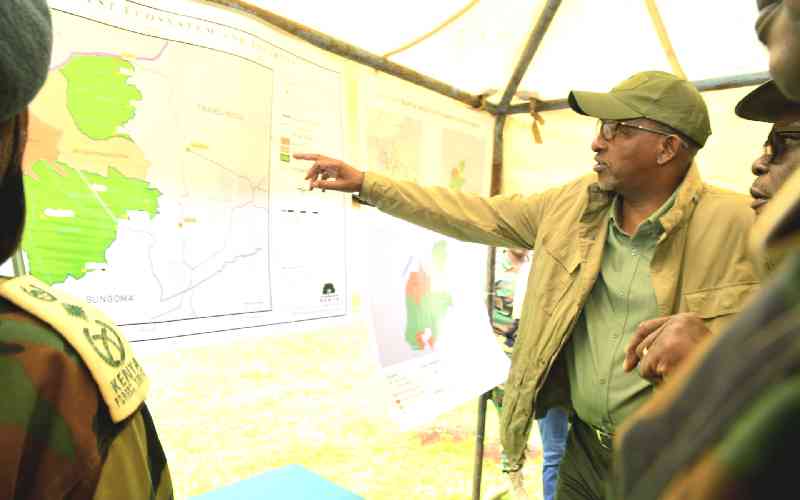We are cooped up in our homes or towns, unable and afraid to move around.
However, what keeps us going is that this will be over and life will go back to its usual rhythm of lively sounds and thumping pace. While the travel and tourism industry has been battered to within an inch of its life, we look forward to the day it will bounce back, with this collection of attractions on our wish list.
The elephants of Amboseli
They are an attraction that make Amboseli National Park one of the country’s top conservation areas. This, combined with the park’s flat topography makes it one of the best game-viewing locations.
The ‘home of the African elephant’ is home to large herds of elephants, some of the largest and it is from this that it throws up ‘celebrity elephants’. Earlier this year, you might have read about Tim, the big tusker as the conservation world mourned the iconic elephant who died aged 50. His home was Amboseli.
It is also from the park that the world’s most famous image of Mt Kilimanjaro in neighbouring Tanzania can be captured. The mountain, just across the border, has always been a sticking point between Kenyan and Tanzanian conservation buffs. This is because while the mountain is wholly in Tanzania, its best viewing point is in Kenya.
Lying by the swimming pool at Ol Tukai Lodge in Amboseli, the mountain towers nearby as if you could reach out and touch it.
One of the best-selling points of Amboseli is that it is accessible by road -- and the roads are good and navigable.
This plus the fact that from Observation Hill in Amboseli, you can easily see the whole park and what it has to offer.
Il Ngwesi Conservancy and eco-lodge
Being in the middle of nowhere might not be the dream of everyone, especially being cooped up for weeks, but Il Ngwesi isn’t just anywhere. It is a community eco-lodge and conservancy set amid the sights and sounds of nature on the edge of the Mukogodo escarpment.
The lodge stands like a lone sentry looking over the landscape before it, and down to the Ngare Ndare river that flows not far from it.
Neighbouring Lewa Conservancy in the plains that hug Laikipia and Isiolo counties, this is a stretch that is probably better known for its unforgiving climate in the throes of a scorching sun at the doorsteps of what is Kenya’s arid north.
However, Il Ngwesi is one of the few places that achieve an admirable balance between community and nature. The cottages blend with the background, and are at one with the environment.
The ‘small five of Shaba’
Stay informed. Subscribe to our newsletter
Also in the northern reaches of the country is Shaba Game Reserve. Found in Isiolo County, it borders Samburu National Reserve in Samburu County to present a formidable experience when it comes to game drives.
The reserve is best known as the home of George and Joy Adamsom, the duo behind the Born Free fame.
The story goes that in 1956, a lioness charged at George and he shot and killed her. To his remorse, he found out that the lioness was only protecting her cubs. George and Joy raised the smallest cub, Elsa. They trained her and later released her in to the wild. This story spawned a book and a movie, Born Free, and countless documentaries.
Back to Shaba, and the neighbouring Buffalo Springs and Samburu game reserves, there is a special attraction that sets this conservation area apart. In many other areas, the Big Five is the rallying cry. Here, however, is the one place where you stand a chance of seeing the Grévy’s zebra, the reticulated giraffe, the gerenuk, the Beisa Oryx and the Maasai ostrich.
The Sarova Shaba Lodge, within the Shaba Game Reserve, is set on the banks of the Ewaso Ng’iro River – famous for its crocodiles - with the lodge rooms set in such a way that the guests can see the river down below.
The twin adventures of Mt Elgon
This is another charming destination in the western part of the country. As the name suggests, the park encompasses Mt Elgon on the border of Kenya and Uganda.
The park presents twin adventures. Combining the chance to see wildlife and other attractions as well as hike up Kenya’s second tallest mountain, if you are up to it. Climbing the mountain to the highest point, Koitobos, on the Kenyan side, takes about two days.
The highest peak, Wagagai, is on the Ugandan side. Attractions at Mt Elgon National Park include a network of caves formed by ancient lava tubes and the salt-mining elephants of Kitum cave, which is just one of the caves there.
Finch Hattons
Picture this, you’re seated having breakfast while in the background hippos cavort in the river, snorting showers of water into the morning air. This is what Finch Hattons in the Tsavo West National Park offers.
“To the west lies Mount Kilimanjaro, a dormant volcano and the highest peak in Africa. To the northwest, ripple the gentle Chyulu Hills, some of the youngest hills in the world. All around you, as far as the eye can see, span miles and miles of untouched African wilderness, home to the greatest biodiversity on Earth,” is how the luxury tented camp describes its surroundings.
Named after Denys Finch Hatton, one-time lover of Karen Blixen and big game hunter, the camp is a local tourism royalty spot. It borrows from the aristocrat’s love for wilderness and tastes.
Set on the banks of a river teeming with hippos and crocodiles, the view is a picture straight from a post card.
Another key attraction is the park it is in. Tsavo West National Park is one of the largest conservation areas in the world, and what the Kenya Wildlife Service describes as the land of magical lava, springs, man-eaters and magical sunsets: “From the sight of fifty million gallons of crystal clear water gushing from the under parched lava rock that is the Mzima Springs to the Shetani lava flows, Tsavo West is a beautiful, rugged wilderness.” Tsavo is known for its red elephants because they bathe in red soil.
 The Standard Group Plc is a
multi-media organization with investments in media platforms spanning newspaper
print operations, television, radio broadcasting, digital and online services. The
Standard Group is recognized as a leading multi-media house in Kenya with a key
influence in matters of national and international interest.
The Standard Group Plc is a
multi-media organization with investments in media platforms spanning newspaper
print operations, television, radio broadcasting, digital and online services. The
Standard Group is recognized as a leading multi-media house in Kenya with a key
influence in matters of national and international interest.
 The Standard Group Plc is a
multi-media organization with investments in media platforms spanning newspaper
print operations, television, radio broadcasting, digital and online services. The
Standard Group is recognized as a leading multi-media house in Kenya with a key
influence in matters of national and international interest.
The Standard Group Plc is a
multi-media organization with investments in media platforms spanning newspaper
print operations, television, radio broadcasting, digital and online services. The
Standard Group is recognized as a leading multi-media house in Kenya with a key
influence in matters of national and international interest.








